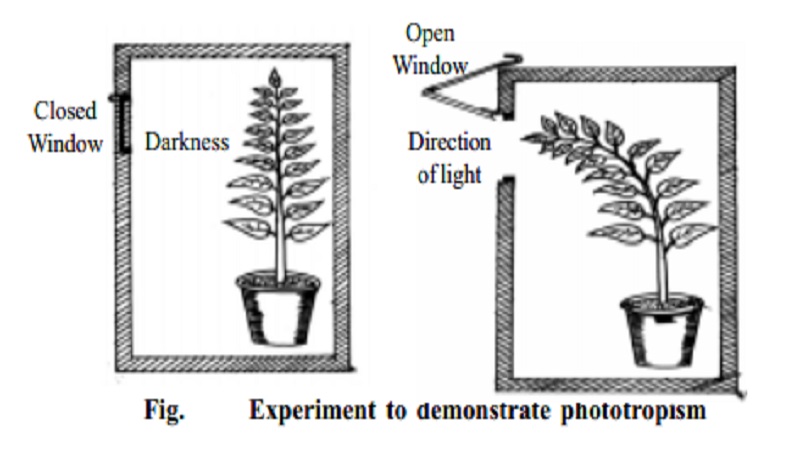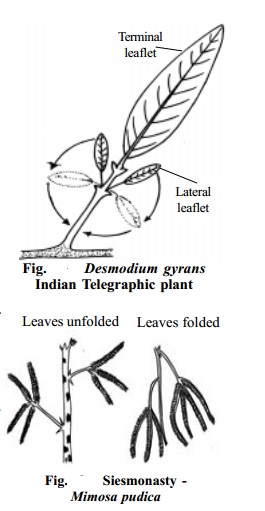Chapter: 11 th 12th std standard Bio Botany plant tree Biology Higher secondary school College Notes
Phototropism And Turgor Growth Movements

Phototropism
The tropic movement taking place as a response to the light stimulus is called Phototropism. Some of the plant parts such as stems, branches, leaves and, pedicels of flowers move towards the stimulus of light and are said to be positively phototropic while others such as roots and rhizoids which move away from the stimulus of light are said to be negatively phototropic.
Phototropism was first studied by Charles Darwin in 1880 in Canary Grass and oatcoleoptiles. Later on F.W. Went in 1923, suggested the involvement of auxins in this phenomenon.
Experiment to demonstrate positive phototropism in shoot tips
A darkened black box is taken having a small window at one side. A well-watered potted plant is placed inside the box. The is referred to as a phototropic chamber or heliotropic chamber.
The window is kept closed for about 24 hours and the plant shows normal growth. If the window is kept opened, it is found after two days, that the shoot tip bends and grows towards light proving that it is positively phototropic.

Turgor Growth Movements
These types of movements are brought about by changes in turgor pressure of the cells causing the movement. These may be divided into two types.
(i) Autonomous or spontaneous and
(ii) Paratonic or Induced.
(i) Autonomous Turgor Movements
These do not require any stimulus and are observed in the Indian Telegraphic plant - Desmodium gyrans. Here the compound leaf shows three leaflets, one terminal large leaflet and two very small lateral, opposite leaflets.
The two lateral leaflets show rhythmic movements during the day. These move up, then move back, and then move down finally back to the original position. This type of movement is due to variation or change in the turgor pressure at the base of the stalk of each leaflet.
(ii) Paratonic or induced turgor movements
These are turgor movements induced by stimuli such as light, temperature and contact. These movements are also called Nastic movements and may be of various types such as
(i) Siesmonasty
(ii) Nyctinasty
(1) Siesmonasty
This means a response to shaking. The best example is Mimosa pudica (Touch - me - not plant) which is the sensitive plant. Such plants respond to stimuli such as touch, blow or mechanical shock by folding their leaflets and lowering
their leaves. This effect is caused by a change in the turgidity of the leaflets brought about by the movement of water into and out of the parenchymatous cells of the pulvinus or swollen leaf base.
(2) Nyctinasty or sleep movements
The movements are also called sleep movements and are caused by relative changes in cell size on the opposite sides of the leaf base called pulvinus. The movements are attributed to the amount of auxin, K+ ions and therefore the movement of water. Entry of water to the lower side of the pulvinus causes the leaves to stand erect and the exit of water causes them to droop.
The nyctinastic movements may be of two types.
(A) Photonasty
The nastic movement caused in response to light is called photonasty or photonastic movement. The opening of leaves and flowers during day time and their closure at night is an example. The leaves of Oxalis show such a type of sleeping movement.
(B) Thermonasty
The nastic movement taking place in response to temperature is called Thermonasty or thermonastic movement. In Crocus, the flowers open at high temperature and close at low temperature.
Related Topics